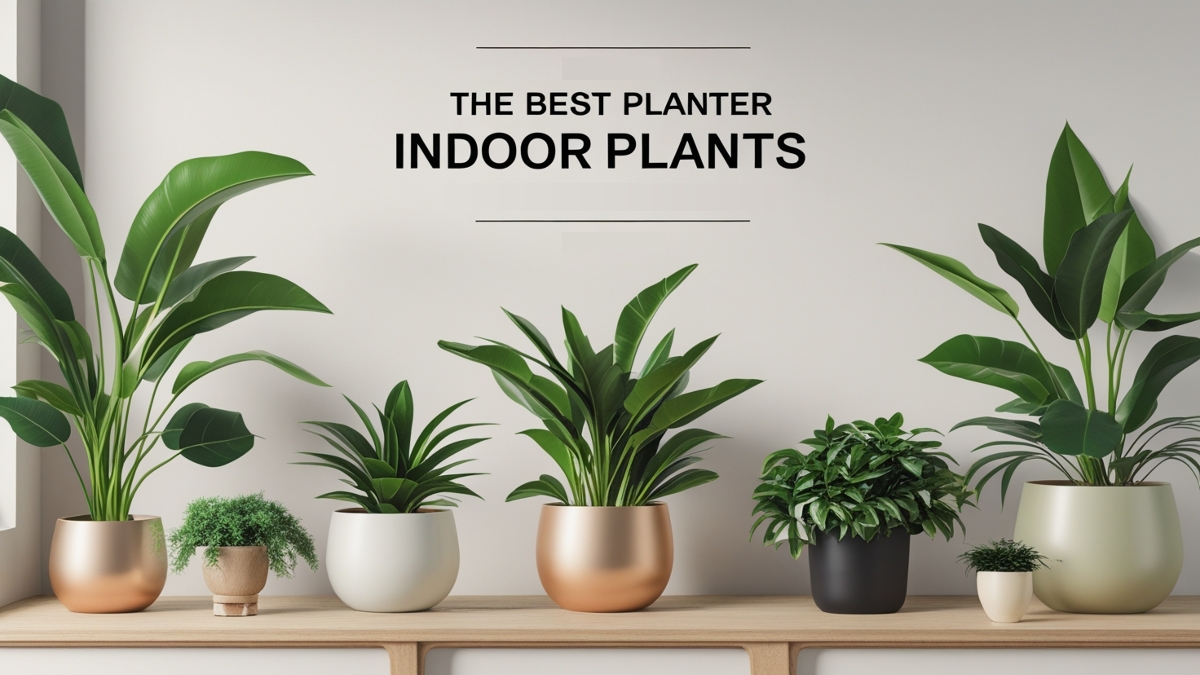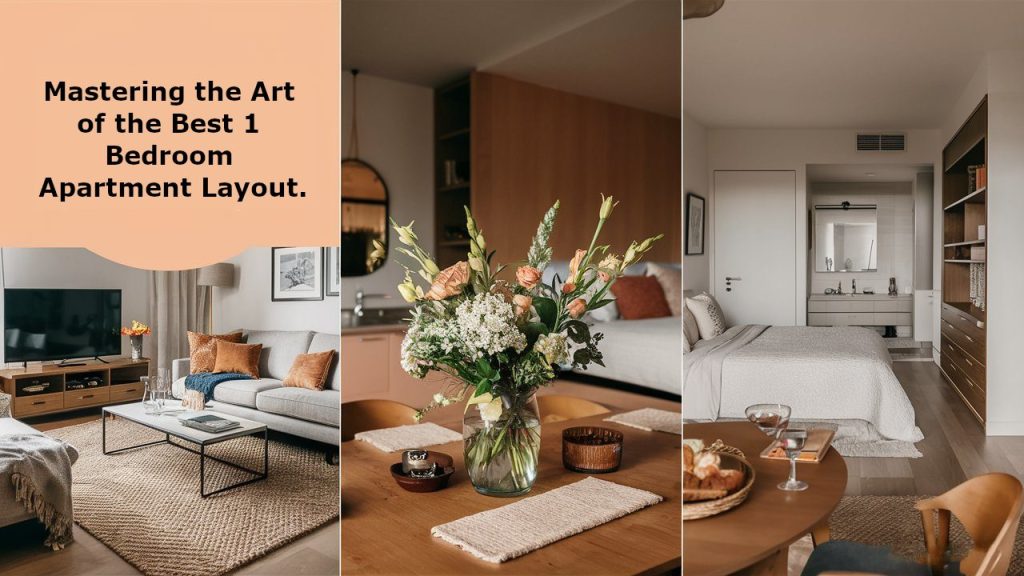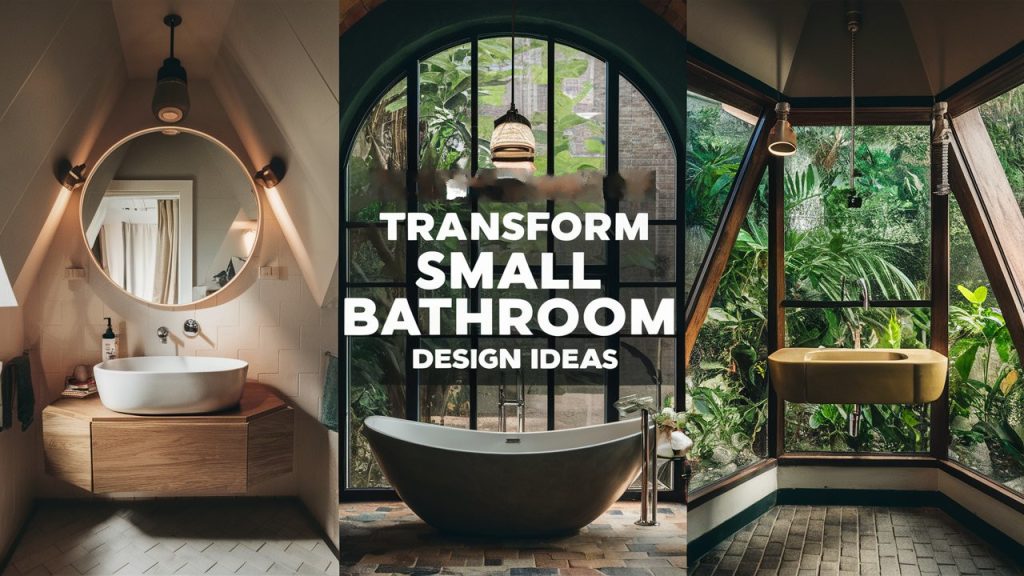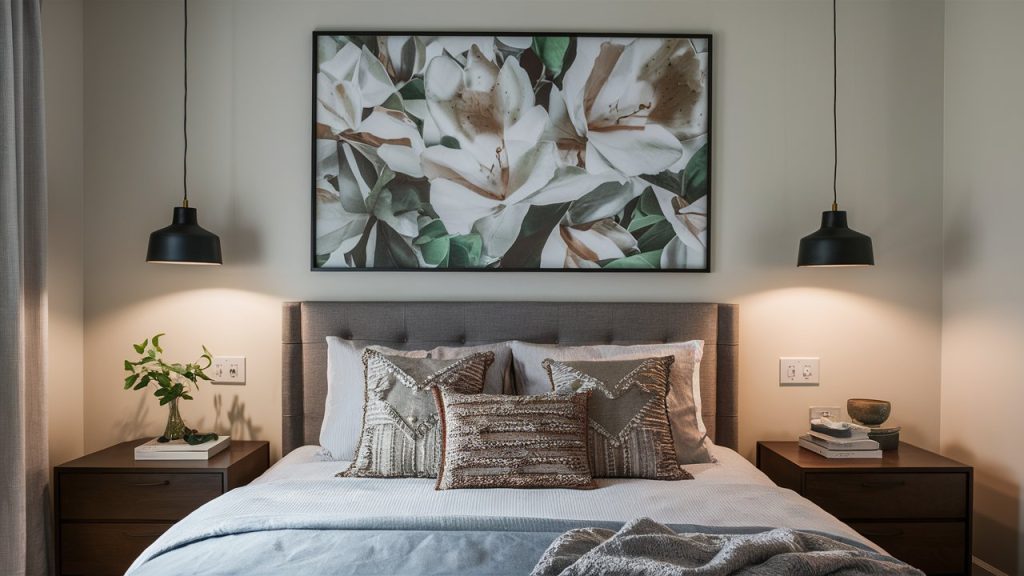Indoor plants are no longer just a luxury for home decor—they’ve become an essential element in commercial spaces as well. Whether it’s for offices, hotels, restaurants, or wellness centers, the right planter indoor plant can transform any space. Not only do these plants add a touch of nature, but they also bring numerous benefits like improving air quality, reducing stress, and enhancing the overall aesthetic of a room.
For interior designers, selecting the perfect planter indoor plant for a project goes beyond just choosing something that looks good. It involves understanding the needs of the space, its functionality, and the desired atmosphere. Choosing plants that fit seamlessly into the overall design theme can help create an environment that is both visually appealing and conducive to the well-being of those who occupy the space.
In this article, we will explore the best planter indoor plants for various commercial spaces, providing tips on how to select, maintain, and incorporate them into your design projects. Whether you’re designing for an office, a retail space, or a wellness center, you’ll find inspiration here for elevating your interiors with the right plants.
Key Takeaways
Table of Contents
Why Indoor Plants Are Crucial for Interior Design
Enhancing Aesthetics and Ambiance
Indoor plants are no longer a mere trend—they’ve become a cornerstone of modern design, especially in commercial spaces. When chosen correctly, indoor plants help create an inviting, calm, and productive environment, whether in an office, café, or hotel lobby. The green hue of plants is known to reduce stress and increase productivity, making them essential for workspaces. Additionally, plants soften the harsh lines of modern furniture and create visual interest, transforming sterile spaces into organic, living environments.
In restaurants and cafes, plants act as more than just decorative elements—they enhance the customer experience by fostering a comfortable, relaxed environment. The presence of plants adds a layer of richness to the overall design, subtly improving the ambiance. Whether through vertical garden installations or potted plants on tables, interior designers use plants to bring life to the space and improve guest satisfaction.
In high-end hotels and resorts, where every detail is meant to convey luxury, plants like the Fiddle Leaf Fig or Bird of Paradise are often chosen for their bold presence and architectural beauty. Large plants in the right planters not only complement the overall design theme but also contribute to the feeling of relaxation and well-being that is critical in hospitality settings.
Air-Purifying Plants: A Key Choice for Interior Designers
Health Benefits of Air-Purifying Indoor Plants
One of the most significant advantages of indoor plants is their ability to purify the air. Commercial spaces, particularly offices and hotels, often have poor air quality due to closed environments and heavy traffic. Air-purifying plants help alleviate these issues by filtering out harmful toxins like formaldehyde, benzene, and carbon dioxide. Incorporating these plants into your design can not only enhance the aesthetic appeal but also contribute to a healthier atmosphere for both employees and guests.
For example, the Peace Lily (Spathiphyllum) is an excellent choice for offices and hotels due to its ability to remove airborne toxins and add elegance with its white flowers. Similarly, the Snake Plant (Sansevieria) thrives in low-light environments and is known for its ability to absorb carbon dioxide at night, making it perfect for places like conference rooms or lobbies where airflow might be limited.
Plant Type | Ideal Location | Air-Purifying Benefits | Examples of Plants |
|---|---|---|---|
Toxin-Removing Plants | Offices, Hotels | Filters out harmful toxins like formaldehyde, benzene, and carbon dioxide, improving air quality in enclosed spaces. | Peace Lily, Bamboo Palm, Spider Plant |
Low-Light Air Purifiers | Conference Rooms, Lobbies | Thrives in low-light environments and absorbs carbon dioxide at night, contributing to better air quality and health. | Snake Plant |
Tropical Air Purifiers | Lounges, Offices, Waiting Areas | Adds a tropical feel while purifying the air, making spaces feel more relaxed and fresh. | Bamboo Palm |
Other great air-purifying options include the Bamboo Palm, which adds a tropical feel to offices and lounges, and the Spider Plant, which is easy to maintain and effective in removing indoor pollutants. By selecting plants that not only enhance the design but also improve air quality, interior designers can create spaces that are both beautiful and healthy.
Low-Maintenance Plants for Busy Commercial Spaces
Why Low-Maintenance Plants are Ideal
One of the most important considerations for interior designers when selecting planter indoor plants for commercial spaces is maintenance. In high-traffic environments like offices, retail stores, and hotels, plants must be easy to care for while still making an impact. Low-maintenance plants are ideal because they require minimal upkeep, which helps keep costs down and ensures that the plants remain healthy without too much intervention.
The ZZ Plant (Zamioculcas zamiifolia) is a perfect example of a low-maintenance plant. It thrives in a variety of light conditions, requires infrequent watering, and is highly tolerant of neglect. Another great option is the Snake Plant, which can go weeks without water and doesn’t need much sunlight to thrive. These plants are perfect for commercial spaces where plant care might not be a top priority but still need to look fresh and vibrant.
Additionally, succulents such as Aloe Vera and Echeveria are perfect for low-maintenance plant solutions. These plants are drought-tolerant, requiring minimal watering and little care, making them perfect for retail environments or small spaces where easy upkeep is essential.
Best Planter Indoor Plants for Offices & Corporate Spaces
Creating a Productive Environment with Plants
When selecting planter indoor plants for offices, the goal is to enhance employee well-being and productivity. Plants like the Snake Plant, ZZ Plant, and Peace Lily thrive in low-light environments and are well-suited for areas with limited natural sunlight. These plants improve air quality, reduce stress, and create a more inviting atmosphere, which is crucial in spaces where employees spend long hours.
Additionally, incorporating plants into office layouts can help break up the monotony of cubicles and workstations. Strategic plant placement in areas like reception desks, break rooms, and waiting areas not only adds visual interest but also contributes to a more relaxed and positive working environment. For larger offices or open-plan spaces, large indoor plants like the Fiddle Leaf Fig or Rubber Plant can act as focal points and help to define different zones within the office.
Type of Plant | Ideal Location | Benefits | Examples of Plants |
|---|---|---|---|
Low-Light Plants | Offices with Limited Natural Light | Improves air quality, reduces stress, and creates a more inviting, productive environment in low-light areas. | Snake Plant, ZZ Plant, Peace Lily |
Strategic Office Placement | Reception Desks, Break Rooms, Waiting Areas | Adds visual interest, breaks up monotony, and fosters a relaxed, positive atmosphere in high-traffic spaces. | Spider Plant, Pothos, Aloe Vera |
Large Focal Plants | Open-Plan Offices, Larger Spaces | Acts as a focal point, defines different zones within the office, and enhances the overall office design. | Fiddle Leaf Fig, Rubber Plant |
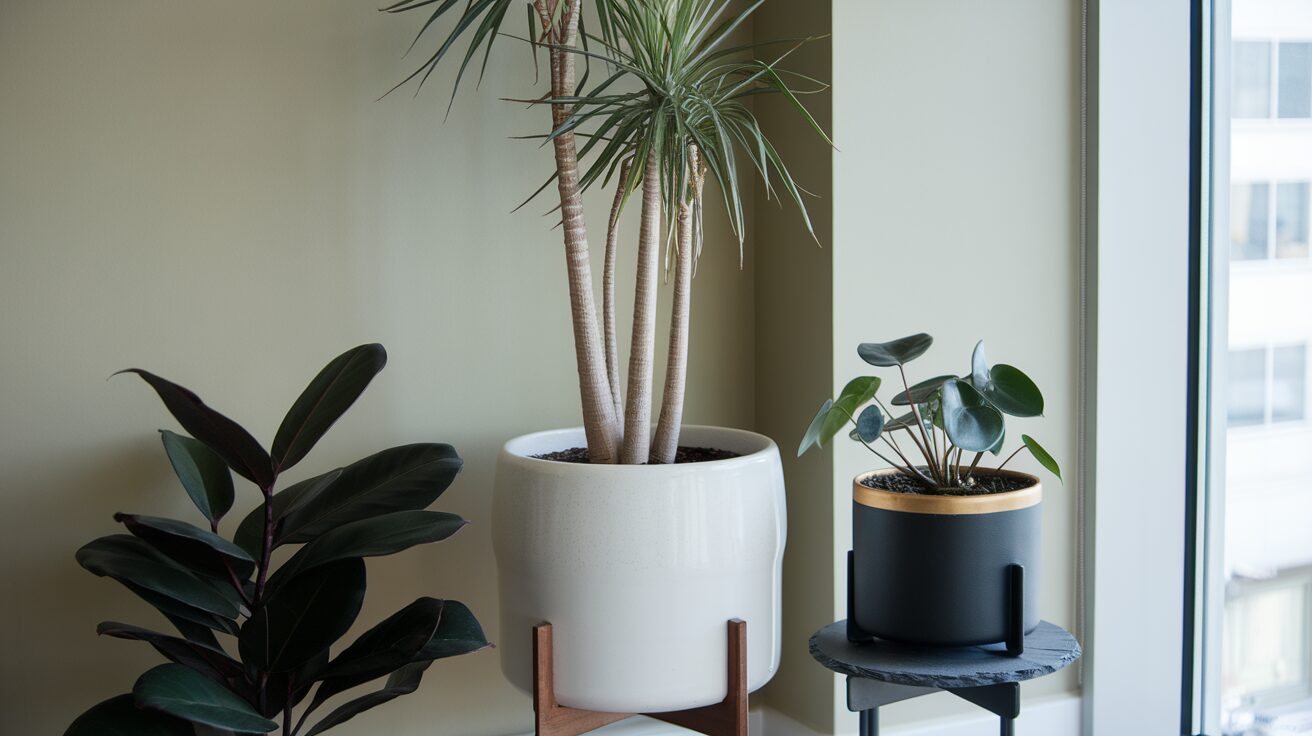
Indoor Planters in Office
Incorporating Plants in Restaurants and Cafes
Creating a Warm, Inviting Atmosphere
In restaurants and cafes, plants play a crucial role in enhancing the dining experience. The right planter indoor plants can complement the overall theme of the space, creating an atmosphere that is both warm and inviting. For example, hanging planters filled with Ivy or trailing Pothos can add an element of elegance while conserving space.
On the other hand, potted herbs like basil, mint, and rosemary not only add color and texture to tabletops but can also serve a functional purpose by being used in the kitchen. Larger plants such as palms or Fiddle Leaf Figs are perfect for filling empty corners or acting as focal points in large open spaces.
In terms of planters, materials like terracotta or rustic wood pair beautifully with a more casual, earthy restaurant theme, while sleek ceramic or metal planters are better suited for modern or industrial dining spaces.
Plants for Hotels and Resorts: Elevating Luxury and Comfort
Luxury and Relaxation with Planter Indoor Plants
Hotels and resorts are spaces where design and comfort need to go hand in hand. The right indoor plants can elevate the luxury experience for guests while adding tranquility and relaxation to the overall ambiance. For high-end hotels, large statement plants like the Bird of Paradise or Kentia Palm create a dramatic impact and enhance the feeling of opulence in lobbies, suites, and outdoor areas.
Smaller plants like Aloe Vera or Peace Lilies can be placed in guest rooms or bathrooms to add a touch of nature and create a serene atmosphere. Moreover, plants like orchids or Bamboo Palms can be incorporated into hotel spas and wellness centers to provide calming vibes that contribute to a stress-free, luxurious experience.
Type of Plant | Ideal Location | Effect on the Space | Examples of Plants |
|---|---|---|---|
Large Statement Plants | Lobbies, Suites, Outdoor Areas | Creates a dramatic and luxurious impact, enhancing the feeling of opulence and sophistication. | Bird of Paradise, Kentia Palm |
Smaller Decorative Plants | Guest Rooms, Bathrooms | Adds a serene, calming touch and helps create a relaxing atmosphere for guests. | Aloe Vera, Peace Lily |
Spa and Wellness Plants | Spas, Wellness Centers | Contributes to a stress-free, luxurious experience by providing calming vibes and enhancing the overall ambiance. | Orchids, Bamboo Palm |

Indoor Plants in Hotel Lounge
Indoor Plant Solutions for Wellness Centers and Spas
Calming and Therapeutic Effects of Plants
Spas and wellness centers are designed to be sanctuaries of peace and relaxation, making the selection of planter indoor plants especially important. Plants like Lavender and Jasmine not only bring fragrance but also have therapeutic properties, helping to create a calming, tranquil environment.
In these spaces, plants are often used to create a sensory experience. Soft green foliage, combined with natural materials for planters like ceramic or wood, helps to balance the calming atmosphere while also improving air quality. For wellness centers, plants like the Snake Plant or Aloe Vera also add the benefit of purifying the air, making them ideal for spaces where relaxation is the priority.
How to Choose the Right Planter for Your Plants
Selecting the Perfect Planter to Match Your Design
Choosing the right planter is just as important as choosing the right plant. The planter should complement the interior design theme, whether you’re going for sleek modernism or rustic charm. Planters come in a variety of materials, shapes, and sizes, so it’s essential to consider how they will fit within the overall design of the space.
For corporate spaces, sleek and minimalistic planters made from materials like metal, fiberglass, or ceramic are often the best choice. For more relaxed environments like restaurants or spas, planters made of wood, terracotta, or woven materials can help create a more rustic or organic look.
Conclusion
Indoor plants are powerful tools in any interior designer’s toolkit, adding beauty, functionality, and health benefits to commercial spaces. Whether it’s an office, restaurant, hotel, or spa, the right planter indoor plant can elevate the entire space and create an atmosphere that is both welcoming and productive. From air-purifying plants to low-maintenance options, there’s a plant solution for every commercial project. By carefully selecting the right plants and planters, interior designers can create environments that are not only aesthetically pleasing but also beneficial for the well-being of everyone who steps into the space.
Frequently Asked Questions
What are the best indoor plants for offices?
Plants like the Snake Plant, ZZ Plant, and Peace Lily are ideal for low-light offices and require minimal maintenance.
Which plants are easiest to maintain for commercial spaces?
Succulents, Snake Plants, and ZZ Plants are all low-maintenance, perfect for high-traffic commercial environments.
Can indoor plants improve air quality in commercial spaces?
Yes, plants like the Spider Plant, Peace Lily, and Bamboo Palm help purify the air by absorbing toxins and improving oxygen levels.
What type of planter is best for commercial spaces?
Modern materials like fiberglass, ceramic, and metal are excellent for commercial spaces due to their durability and aesthetic appeal.
How do I maintain indoor plants in a commercial environment?
Regular watering, occasional re-potting, and ensuring proper light conditions will keep your indoor plants healthy in commercial settings.
Are there any plants that can be used for both decorative and functional purposes?
Yes! Plants like Basil, Rosemary, and Aloe Vera not only enhance the decor but can also be used in kitchens or wellness treatments.

Robert Martin is a passionate blogger and versatile content creator exploring the intersections of personal finance, technology, lifestyle, and culture. With a strong background in financial literacy and entrepreneurship, he helps readers make smarter money moves, build sustainable side hustles, and achieve financial independence.
Beyond finance, Robert shares his insights on home decor and gardening—offering practical ideas for creating beautiful, functional living spaces that inspire comfort and creativity. He also dives into the dynamic worlds of sports and celebrity news, blending entertainment with thoughtful commentary on trends that shape today’s pop culture.
From decoding the latest fintech innovations to spotlighting everyday success stories, Robert delivers content that’s informative, relatable, and actionable. His mission is to empower readers to live well-rounded, financially confident lives while staying inspired, informed, and ahead of the curve.

